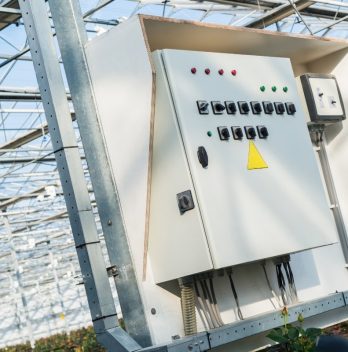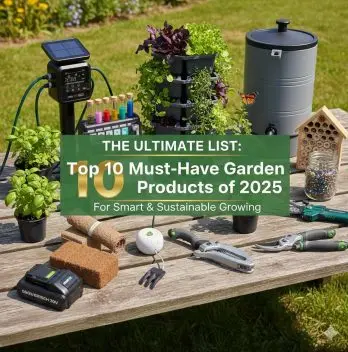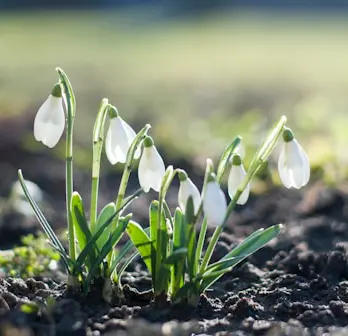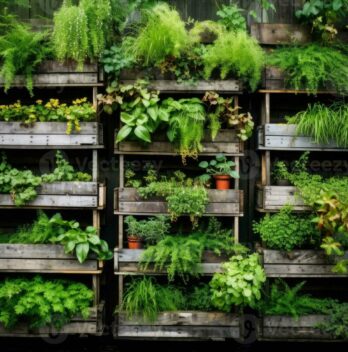Having control over your indoor garden space is the beauty of indoor gardening. Part of this control can be experienced with a DIY grow light controller. Utilizing a grow light controller is a safe and reliable way of operating your indoor garden.
You will require a grow light controller especially if you’re not always in your home to operate your grow light. As such, you can set your grow light to operate at specific times or hours using a grow light controller.
In this post, we will be discussing DIY grow light controller as well as recommending some grow light controllers to purchase. So, continue reading to find out about this.
What Are Grow Lights?
Grow light is a lamp or light powered by electricity and it’s used in supplying plants the light they need to grow. Grow light is usually meant to imitate the work done by the sunlight on indoor hydroponic plants.
Most grow light will supply a full spectrum for a plant’s growth. They emit a different color spectrum that helps stimulate the development of plants.
There are various types of grow light such as fluorescent light, light-emitting diodes (LED), high-intensity discharge lights, and so on. All these grow lights have various characteristics and they function differently but they all provide light for your plants’ growing needs.

So, supplying your indoor plants with optimal light is one crucial factor in their growth. However, you need to know the duration to which your grow lights will be on for.
Grow lights are not meant to be on for 24 hours. Different plants require different light duration that must be followed for their optimum growth.
Also, the various plant stages of your plants will require different light requirements. With the grow light controller, you can set your light to a specific time which will run even in your absence.
Grow Light Controller
So, why do we need a lightning controller for our indoor gardening? Making use of a grow light controller gives you a safe way of operating your indoor garden.
Take for instance the high intensity grow light (HID) that offers good light intensity which allows you to grow your plants efficiently. However, the HID consumes much power especially when you first switch them on. This means they are high voltage requiring them to be ignited.
Now, an HID grow light requires a special ballast to power them or operate. This ballast produces a high inductive electrical power that powers on the lamp. Usually, the lamp fitting is attached to the electronic ballast and the ballast will be connected to a power source. Now, with the HID requiring a lot of load to power on and this may cause some malfunctioning issues as they run.
So, this is where the lightning controller comes in. Depending on the controllers’ capacity, it will help you run 2 and even more grow lights of specific capacity smoothly. The lightning controller will bring safety and simplicity to your indoor garden.
DIY Light Controller
To build or set up your DIY grow light controller, simply follow the process here.
Some Recommended Grow Light Controller Box
If you don’t want to go through the stress of a DIY grow light controller, you can simply purchase ready-made ones. So, below are some recommended grow light controllers for your indoor garden:
1. Titan Controls HGC702843 Professional Series Helios 18 – 12 Light 240 Volt Controller
Here, we have the Helios Titan controls for controlling your grow lights. It can run up to 12 high-intensity discharge (HID) grow lights at 240 volts. Therefore, you can run all your 12 lights on a single timer. Isn’t that great?
With this Helios Titan grow light controller, you can even run two different timing programs using the dual trigger cord sets. The front panel is removable and it permits you easy access to wire the controller into your power system. It is also made of durable materials that you will enjoy for a long time.
w/Dual Trigger Cords (4/Cs), Brown/A
All in all, this Helios Titan control is a safe way to operate high-intensity grow light in your indoor garden.
2. Top Grow 8 Lighting Relay Ballast Maximum 8000W Grow Light Controller for Hydroponics
Next, we have the Top Grow 8 light controller. This grow controller is a reliable controller that will permit you to run up to 8 grow lights. Each outlet allows you to run 1000 watts of 8 different grow lights resulting in 8000 watts total or maximum light wattage.
The 8 outputs permit you to operate 8 different grow lights at 120/240 volts together. The light controller is also pretty durable and it will be perfect for your plants’ growing system.
It features a trigger cord that allows you to plug into a standard 24 hours timer to vary the lighting programs.
Hydroponics Light controller for Indoor Double Ended Grow Lights and Grow Tents
3. Titan Controls 8-Light Controller, 240V – Spartan Series
Here is another Titan grow controller which is suitable for running up to 8 grow lights. It allows you to operate grow light of up to 8000 watts in your indoor garden. This means you can run 8 different 1000 watt grow lights.
The grow light controller is made of durable material. This controller is also contained in a rust and dust-free compartment as well as moisture-proof compartment.
The Titan grow light controls also features dual cord sets that permit you to operate two separate lightning programs.
FAQ’s
How do you make a light controller?
What do you need? This is what I use: 1 x Raspberry Pi 3 Model B 4 x 100 watt power supplies (I got mine from Amazon) 4 x high quality heat sinks (I got mine from Amazon) 4 x 2, 1A power adapters (I got them from Amazon) 4 x 6V 2A power supplies (I got mine from Amazon) 4 x MOSFETs (I got mine from eBay) 8 x LED lights (I got mine from Amazon) The process is fairly simple. You take the LED lights and the Raspberry Pi and put them in a box. Then you connect it to your AC power supply and run it for 10 minutes to charge the battery and the battery will last long enough to grow plants. The only thing I would suggest is that you put the lights on a heat sink or a radiator to prevent the LEDs from burning up.
How many volts does a grow light need?
Voltage determines how much power the light bulb can provide to your plants Voltage determines the color temperature of the light bulb (e.g. warm white vs. cool white) Voltage determines how fast your plants grow (i.e.how fast they mature from seed to harvest) A higher voltage will provide more energy and produce more light. If you use a high-powered LED, it should be able to provide a sufficient amount of light for most plants. However, if you are using a low-powered LED, you may want to increase the voltage by adding an extra transformer or inverter to boost the output. You can find voltage conversion kits on Amazon or eBay. The kit usually includes a power supply with a voltage range from 12 to 60 VDC and a transformer or inverter to change the voltage to 120 VAC.
How do you use a grow light timer?
You can use any of the timers that are sold by GrowTek.com. This timer allows you to choose when your lights will turn on and off. It can be used in conjunction with any grow light you buy from Growtek.com.
What do light controllers do?
They administer the light that you pants receive over the day. Light is the most important factor for a plant’s growth. Plants need light to grow, but also require it to produce fruits, flowers, seeds and so on. Plants also need the right amount of light. Too little light can cause plants to grow poorly or not at all. Too much light can harm plants.
The amount of light you use depends on several things. The first thing you need to consider is the kind of plant you are growing. Some plants are sensitive to sunlight, while others tolerate it better. There are also different types of light bulbs. You may have noticed that some lights produce more light than others. This is because some bulbs have a higher wattage. If you plan to grow an indoor plant, you should use a fluorescent light. It is safe for plants and does not produce too much heat. You should also consider the position of your light. You will need to ensure that the light is positioned in a way that it reaches the plant. If you have a single plant, you should position the light so it is aimed at the leaves.
Final Say On DIY Grow Light Controller
Different plants require different light timing schedules for their growing needs. Therefore, it’s important you provide them the right light duration. So, you can do this by simply plugging your various grow lights into a standard timer or controller.
There are many benefits to using a grow light controller for your plants’ growing system. You get to control more than one grow light giving them separate light timing schedules. Thus, the lightning controller offers you control, simplicity, and safety to your indoor garden. So, you can go for a DIY grow light controller or simply purchase a ready-made brand.

Eunice is an enthusiastic gardener with a passion for growing beautiful flowers. She loves nothing more than spending time in her garden, tending to her plants and enjoying the outdoors. Eunice has been gardening for over 15 years and has developed a unique style of landscaping that is both practical and aesthetically pleasing. She is especially fond of growing roses and enjoys experimenting with different varieties and colors. Eunice takes great pride in her garden and often shares the fruits of her labor with friends and family. In her spare time, she enjoys reading gardening magazines and attending local horticulture events. Eunice is passionate about her hobby and is always eager to share her knowledge and experience with others.







